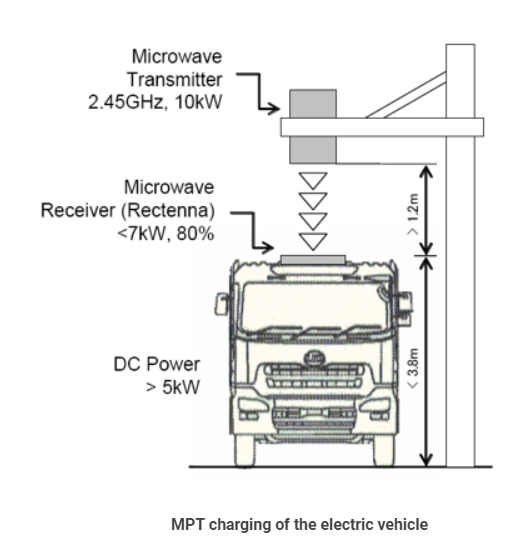
Applications of WPT
Our Team
- Darshan S
- Rishee K
- Ritik Kumar Mehta
- Sakshi Chavan
- Sudhaharan S J
Applications of WPT
Electric Vehicles :-

As concern over global warming and greenhouse gas emissions grows across the globe, the prevalence of electric vehicles has also increased. One of the drawbacks of electric vehicles is their battery. Electric vehicles currently need to be plugged in to recharge their internal batteries and take many hours to do so. However, many envision that in the near future, one need only park her car in a predetermined spot in her driveway and the car will charge wirelessly and automatically. Thus a great deal of research has been done into WPT, specifically through the MPT mechanism, and how it can be used for the charging of electric vehicles.
The case study we will use for MPT charging of electric vehicles, specifically a system for charging electric trucks. As shown in Figure 4 an electric truck has a rectenna on its roof, and an MPT system can be created such that when an electric truck parks beneath the microwave transmitter, the rectenna converts the microwave radiation to DC to charge the vehicle.

In particular, the transmitter emits 10kW power through microwaves at 2.45 GHz, and the rectenna converts those microwaves with an efficiency of greater than 80%, yielding more than 7kW to the electric vehicle. Accounting for other losses through the charging of the system, the battery is able to receive more than 5kW power. The figure depicts a practical application of MPT.
Importantly, the MPT system depicted has a high density with respect to the forming of the beam, and since the beam is highly focused, thus it does not create a large area of microwave radiation which could potentially be unsafe for human exposure.



